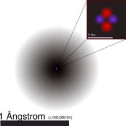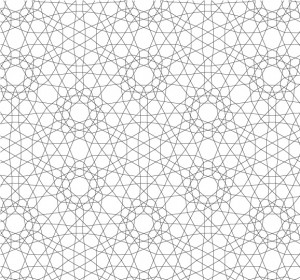Visual Imagination and Invention
This web and blog site is primarily about geometry and about new ways to model structures in space. But it is also about imagination and the need to be flexible with the “models” we create, whether they are geometric, or not; modeling anything from an atom to the way a rain drop falls, or how the weather changes.
Visual imagination comes in many forms. Sometimes there is a type of image triggering in our minds when we look at cracks on a wall, clouds in the sky, rock formations, or the twisted bark of a tree. This type of triggering is often unconscious and can surprise, or even frighten us; when suddenly we see a figure in a tree under a moonlit sky, only to find that it is just the tree.
We often complete images in our visual imaginations with way too little information. This can happen accidentally, or when we’re trying to visually understand something. For example, a rock might appear to be a sleeping man, and the image might be really persistent in our imagination, but then we get more visual clues, and we realize that it is just a rock. We do the same sort of thing when we think we recognize someone in the street, but then find we are wrong. Sometimes, when we complete a visual image with insufficient information, the image stays with us, and we find it hard to give it up, even if it is an incorrect image. A good example of this was the misunderstanding that there were canals on Mars.
A reverse process occurs when we have a mindset for how something is, such as the Earth being a sphere, or an atom looking like a mini-solar-system. The mindsets are only models that we create, and can be very useful, but also limiting. Models of an atom range from that of Democritus, 400 B.C. to quantum models and energy profiles. Each model serves its purpose but none of them capture all of the apparent properties of an atom.
If our models are too strong, or have been overly reinforced by our teachers, then we can become blind to what might really be going on, or to new opportunities or possibilities. We could have a debate as to whether the Earth could ever have been a sphere, and under what circumstances it could find this state of mathematical perfection. It’s only when we realize that the Earth is not a sphere that we can start to understand other things that are going on.
Sometimes misunderstanding what we see leads to new ideas that might apply to something else. Other times, misunderstanding something puts us on alert, when we do not have enough visual information, and we may be right to be wary. But, on the whole, in our relatively safe world, with few predators around, we need to be careful with our imaginations; sometime let them run free, but other times direct them, or question their validity. We have no real, all inclusive, mindset for quantum physics at the moment, even though many are trying to create models to help us understand what is going on – but, on the other hand, it’s wonderful that we do not have any set models for quantum effects; because possibilities remain open. The same is true for many of established mind sets about gravity, about the internal combustion engine, about almost everything – our models can inhibit our thinking. Our visual imaginations help us survive and allow us to do wonderful new things, but sometimes we are mislead by them, and they breed prejudicial ideas. It’s just a matter of how we direct our visual imaginations. We need to be aware of the dangers of the beast!
I’ve always liked the Johnny Hart, BC, comic strip that shows an improvement to the concept of a wheel; from a square wheel to a triangular one. Conceptually the mind set is going the wrong way. Instead of removing a bump, the better solution would be to add bumps, lots of them, in fact an infinity of bumps. Eliminating bumps might have worked if conceptually one could envision moving from a square (four bump wheel), to a three bump, two bump, one bump, and no bump wheel. Would a one bump wheel be a perfect circle (is a one bump wheel possible?), is a no-bump wheel a perfect circle??
There are many ways in which we can exercise our visual imaginations. We can step back from a mindset and try to visualize the focus of our imaginations in a wholly new way. What, for example, might land vehicles look like if we didn’t use wheels? Or how can we visualize an atom in a way that helps us better understand it’s cloud like nature, as much as it’s quantum states? What if we, for a moment, put away the idea that a plane has to look something like a plane – can it look completely different? There are also many visual illusions that we can look at that might help us experience something of the way our visual imaginations work. One such is that of Salvador Dali ( a face or people standing?).
In some small ways the designs in my Images and Altair design books can also help us exercise our visual imaginations. What can you see in a particular design? Now try and see something else? And again, and again. (From Hidden Images, “Dinosaurs,” published by Running Press.






